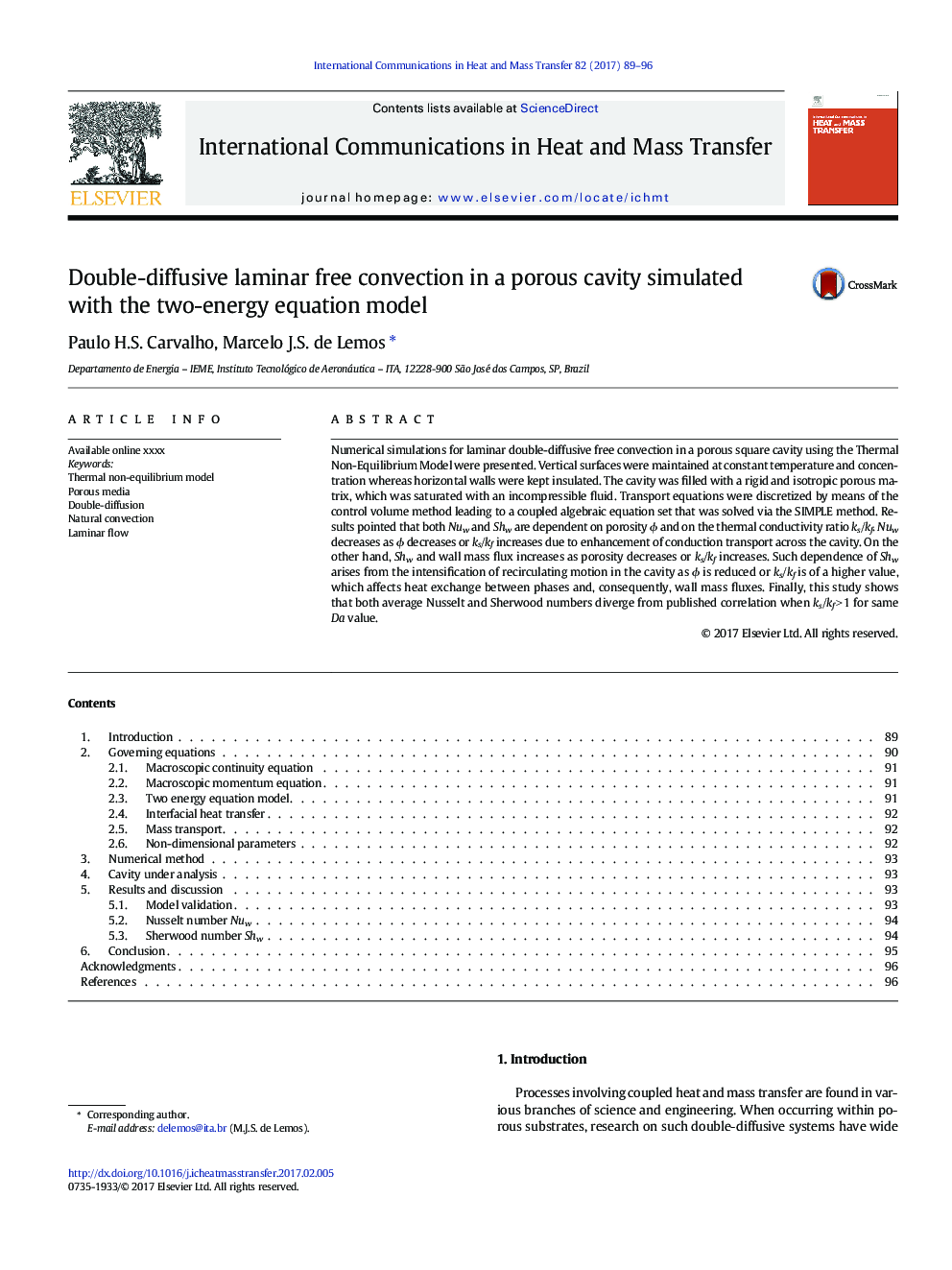| Article ID | Journal | Published Year | Pages | File Type |
|---|---|---|---|---|
| 4993015 | International Communications in Heat and Mass Transfer | 2017 | 8 Pages |
Abstract
Numerical simulations for laminar double-diffusive free convection in a porous square cavity using the Thermal Non-Equilibrium Model were presented. Vertical surfaces were maintained at constant temperature and concentration whereas horizontal walls were kept insulated. The cavity was filled with a rigid and isotropic porous matrix, which was saturated with an incompressible fluid. Transport equations were discretized by means of the control volume method leading to a coupled algebraic equation set that was solved via the SIMPLE method. Results pointed that both Nuw and Shw are dependent on porosity Ï and on the thermal conductivity ratio ks/kf. Nuw decreases as Ï decreases or ks/kf increases due to enhancement of conduction transport across the cavity. On the other hand, Shw and wall mass flux increases as porosity decreases or ks/kf increases. Such dependence of Shw arises from the intensification of recirculating motion in the cavity as Ï is reduced or ks/kf is of a higher value, which affects heat exchange between phases and, consequently, wall mass fluxes. Finally, this study shows that both average Nusselt and Sherwood numbers diverge from published correlation when ks/kf > 1 for same Da value.
Related Topics
Physical Sciences and Engineering
Chemical Engineering
Fluid Flow and Transfer Processes
Authors
Paulo H.S. Carvalho, Marcelo J.S. de Lemos,
